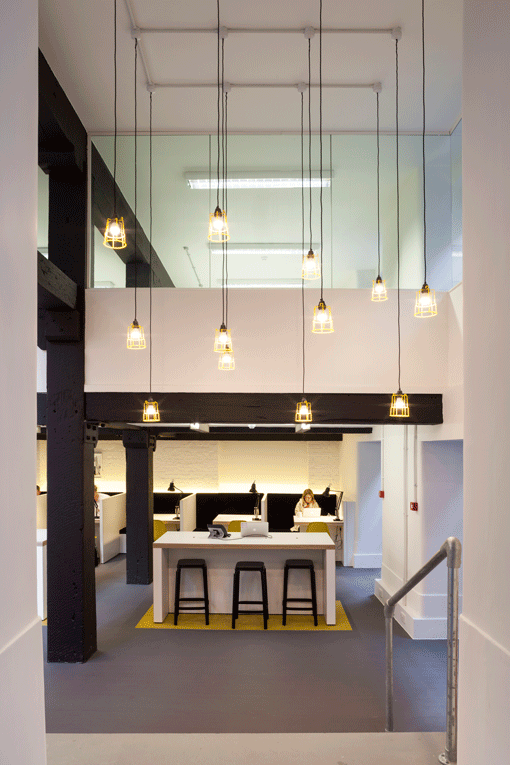Two phenomena have conspired to change the working world: the 2008 financial crash and mobile technology. Virtually omnipresent Wi-Fi allows people to now work anywhere, in theory at least, meaning the idea of being tied to one’s desk seems very last century. So even traditional businesses are reconfiguring their layouts for more "break-out" spaces and fewer work-stations where staff are pinned for the entire working day. It’s got to the stage where on average, only 30-45 per cent of traditionally allocated desks are occupied at any one time, according to CABE, the Commission for Architecture and the Built Environment.
And as a consequence of the crash, huge numbers of staff have been let go as businesses down-sized or collapsed completely. As new permanent jobs are thin on the ground, these people have reinvented themselves as sole traders, consultants, entrepreneurs and the like. The UK now has 600,000 more “microbusinesses” (with up to nine employees) than in 2008, according to the RSA.
While working from the spare bedroom might suit some people, others like to actually go to work. In the past, this need was accommodated by serviced office chains, such as Regis. But there’s a new swathe of such outfits, which are offering two benefits that the old-style shared offices didn’t: networking and an inspiring aesthetic. Set-ups including WeWork, Second Home, The Office Club, Club Workspace and The Office Group all promote the potential for professional and social cross-fertilisation, and each has its own networking system and social events calendar to get their tenants mingling. “We love it when our clients become each other’s clients,” says Charlie Green, co-founder of The Office Group.

Club Workspace’s mantra echoes this: “We aim to bring entrepreneurs and start-up communities together, creating more productive working relationships.”
But there is also a belief among these operators that in order to lure tenants, and in order for those tenants to benefit from the experience, interior design is key. “We figure that if you spend the majority of your time here, the environment needs to be considered and stimulating for you and your team as well as creating the right impression for your clients,” Green at The Office Group explains.
Likewise, Club Workspace takes its interiors seriously. It’s a pleasing, stripped back aesthetic which honours the qualities of each building and its environs. Design agency Studio Tilt was responsible for many of the London chain’s interiors and its furniture. Club Workspace’s site at the Leather Exchange near London Bridge exemplifies this: “Through researching the etchings and illustrations from the original Leather Exchange, all architectural elements were inspired by the machines and apparatus from this time,” says Oliver Marlow, co-founder of Studio Tilt. “These were reinvented from a 19th century industrial context into a distinct contemporary working environment.”
Meanwhile in Peckham, The Office Club space has shared work tables fashioned out of stacked old pallets with large sheets of glass balanced on top. The walls are white washed, with the pipes and columns picked out in tomato red. Local artist Dr Barbados has hand-painted a graphic mural on the whole of the back wall. Any furniture that has been added, such as the internal door, is either "found", donated, or is handmade out of plywood. This strategy of reusing and upcycling sits comfortably in the Bussey Building, an old Victorian cricket bat factory with industrial-shabby feel, just off Rye Lane.
Co-working spaces’ origins are undoubtedly in retrofitting existing buildings – it is good for the operators’ pockets and suits the budget and mind-set of many entrepreneurial tenants. However, as the sector becomes more established, so the design is evolving. Second Home’s first site in Shoreditch in a high-design experience. Its creators are the Spanish duo, SelgasCano, who are also responsible for this year’s Serpentine Pavilion. Situated in a former carpet factory, SecondHome occupies two floors and boasts an orange plastic tunnel which juts out from the façade, and which doubles as a seating area.
This high-end design style may well be applied to a new space planned by The Office Group. Green and his team have taken two floors in one of London’s most prestigious skyscrapers, The Shard. This was surely not who building’s developers had envisaged as a tenant when it was first conceived in 2000. In that respect, The Office Group’s arrival there next year will epitomise how much the times – and spaces – have changed.